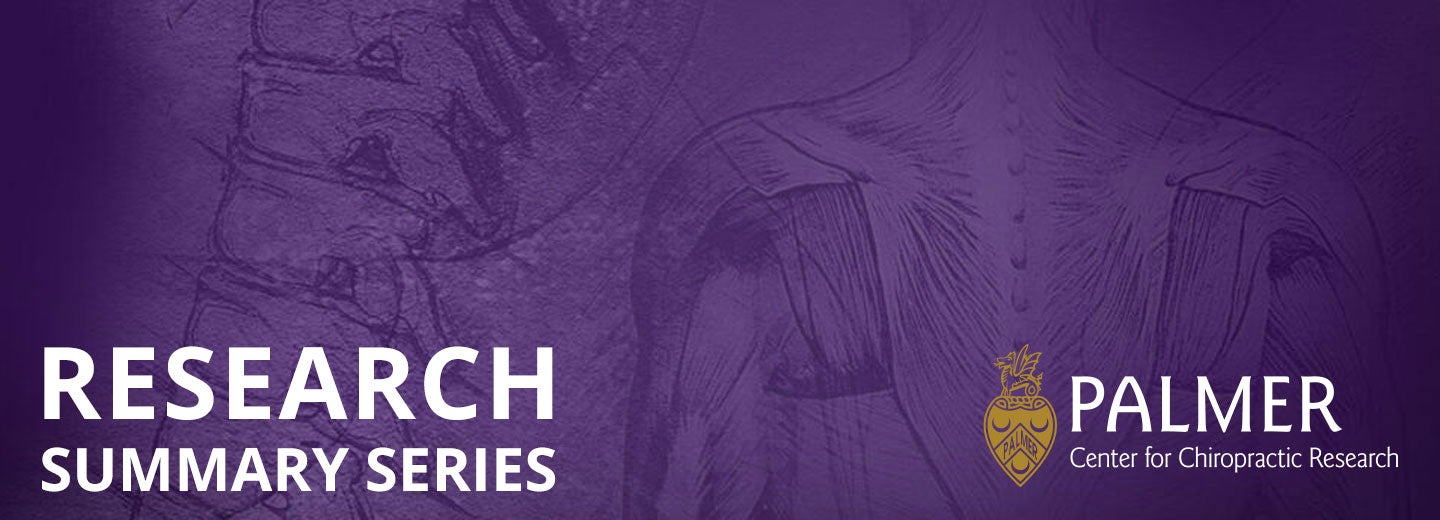Results of a Consensus Process
Contributed by Kira Baca, MS, DC – Post-Doctoral Research Scholar
March 28, 2022
Chiropractors make diagnostic and treatment decisions throughout a course of care. Decision-aids are tools designed to assist in decision-making, by organizing and summarizing scientific evidence to help inform both patients and clinicians during the decision-making process.1 In previous studies, the research team reviewed the scientific literature, recommending standardized terminology surrounding low back pain (LBP) and updating a published examination and diagnostic checklist.2,3 This subsequent study set out to answer the question: “I have a working diagnosis, now what?”
The purpose of this study was to develop a multi-modal treatment decision-aid for managing LBP conditions, by utilizing a consensus-based Delphi process.2 The modified Delphi consensus process recruited a panel of 39 licensed VA chiropractors (Delphi panelists). The study team developed seed statements, that were reviewed and revised by three experts in chiropractic clinical research; seed statements represent summarized literature on chiropractic management decisions for non-pathological conditions causing or contributing to LBP. The panelists rated seed statements to determine statements appropriateness. Statements were considered “appropriate” when the expected health benefits exceeded negative consequences enough to recommend it. Appropriateness was measured numerically (scale of 1-9), with values of 7-9 considered “highly appropriate”. Consensus on appropriateness was reached when 80% of the surveyed chiropractors rated the treatment appropriateness between 7-9, with a median score falling within this range. The decision-aid for managing LBP was made using the seed statements deemed appropriate by panelists.
The decision-aid makes chiropractic management recommendations for a range of common causes and contributors to LBP (structural, neurovascular, musculoskeletal, and psychosocial factors). Evidence-based multi-modal chiropractic management of neuromusculoskeletal LBP uses a range of interventions to address a similarly broad range of causes. Components of multi-modal chiropractic care outlined in the study. They include: (1) education, (2) interventions (active, passive, transitional), (3) self-management, and (4) visit frequency and duration. The objective of patient education in multi-modal care is to empower patients and improve outcomes; it provides them with long-term reassurance and the ability to make informed healthcare decisions that influence other aspects of care (e.g., active interventions or self management).
Practical Application
A practical result of this study is a printable color-coded 4-page decision-aid, that: (1) describes various components of multimodal chiropractic care worth considering for each patient; (2) isolates common contributors in neuromusculoskeletal LBP, and lists evidence-based treatments for the management of each; and (3) summarizes current evidence on suspected mechanisms for a variety of chiropractic approaches to care.
Take Home Message
The article and the management resource it provides offer a summary of evidence-based care options for people with neuromusculoskeletal LBP. Additionally, the range of multi-modal management proposed in this paper provides clinicians with tools for comprehensive patient care, while still acknowledging that care guided by the decision-aid has not been tested clinically.
References
- Trevana L, McCaffery K, Salkeld G, et al. Clinical decision-making tools: how effective are they in
improving the quality of health care? Deeble Institute Issues Brief; 2014. 2. Sackett D, Straus S,
Richard
- Vining RD, Shannon ZK, Minkalis AL, Twist EJ. Current Evidence for Diagnosis of Common Conditions
Causing Low Back Pain: Systematic Review and Standardized Terminology Recommendations. J
Manipulative Physiol Ther. 2019 Nov;42(9):651-664. doi: 10.1016/j.jmpt.2019.08.002. Epub 2019
Dec 20. PMID: 31870637.
- Vining RD, Minkalis AL, Shannon ZK, Twist EJ. Development of an Evidence-Based Practical
Diagnostic Checklist and Corresponding Clinical Exam for Low Back Pain. J Manipulative Physiol
Ther. 2019 Nov;42(9):665-676. doi: 10.1016/j.jmpt.2019.08.003. Epub 2019 Dec 19. PMID:
31864770.
- Vining RD, Shannon ZK, Salsbury SA, Corber L, Minkalis AL, Goertz CM. Development of a Clinical
Decision Aid for Chiropractic Management of Common Conditions Causing Low Back Pain in
Veterans: Results of a Consensus Process. J Manipulative Physiol Ther. 2019 Nov;42(9):677-693. doi:
10.1016/j.jmpt.2019.03.009.
View Development of a Clinical Decision Aid for Chiropractic Management of Common Conditions Causing Low Back Pain in Veterans as a PDF.
The Palmer Center for Chiropractic Research (PCCR) is dedicated to advancing health care for patients by developing knowledge and translating knowledge that improves the practice of chiropractic. Read more articles in the Research Summary Series at palmer.edu.

